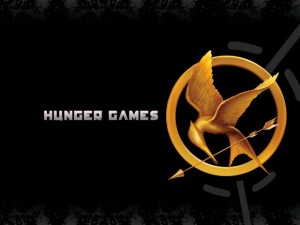“The Hunger Games” is the most thrilling set of books to hit the pop fiction market of our generation. If the millions of readers and moviegoers haven’t convinced you yet, please allow me to try.
I thought “The Hunger Games” was written for an audience of 14-year-old girls. In fact, while working at Barnes & Noble, nearly every person I sold the book to was a teenage girl.

So, it was quite a revelation to find out that the book was centered around a fight-to-the-death competition amongst 24 kids in which only one survives — it was enough to convince me to read the first 10 pages.
Still, I was guilty of thinking that no matter how interesting the concept, the story would likely be of about the same quality as “Twilight.” After all, I like a good vampire story as much as anyone, but even Kristen Stewart’s wonderful acting could not bring life to the plot of this troubled work.
About 20 minutes after I began reading “The Hunger Games,” I realized that I wouldn’t be able to stop. Don’t get me wrong Potterheads, I’m not saying it’s better than the series that you live your lives by, but it is more intense.
The character development is decent, but the real key to “The Hunger Games” is the constant turmoil that the characters go through as they play the game — just as the readers do when they follow the story. The heart of the story is the way that Suzanne Collins, the author, really brings out the pain involved in these games and questions the disregard for the individual.
As the games proceed, Katniss, the main character, seems to have a chance of making it out, but you find yourself stuck — by rooting for her to win, you’re actually rooting for 23 other kids between the ages of 12 and 18 to die.
So, as the story progressed I found myself favoring some characters, pitying others and even almost hoping that some would die, so that the ones I liked could survive longer. When I realized that I was hoping for the death of one of Katniss’s stronger opponents, it caused me to step back and question what was happening.
That’s when I realized just how well this book was written. It’s not difficult to understand, a 12 year old could probably take a lot away from reading it, but at 21, I could too. I came to hate the abuse of power, the indulgence of the rich and the plight of the poor. The fact that I would start rooting for one character to kill another really made me think about my own perception of humanity.
So, “The Hunger Games” really packs a punch to start off the three-book series it is part of, and Collins follows up well with “Catching Fire.” These two books will bring you through a rush of emotions and prime you up for a great finale. Unfortunately, the third book doesn’t really deliver. It seems to stumble through teen angst in a way that provides no great entertainment, while at the same time diminishing the most significant plot points to a few short lines.
My advice would be to pick up the first book as soon as you possibly can and read the first 20 pages. If you’re not hooked, then maybe it’s not for you.
If you want to take the easy way out, go and see the movie. Despite the team Peeta/team Gale type of advertisement (which plays up to the Twilightesque of romance), the movie stays pretty true to the story and is an enjoyable and quick 142 minutes. All in all, the rave around “The Hunger Games” is fairly justified.






